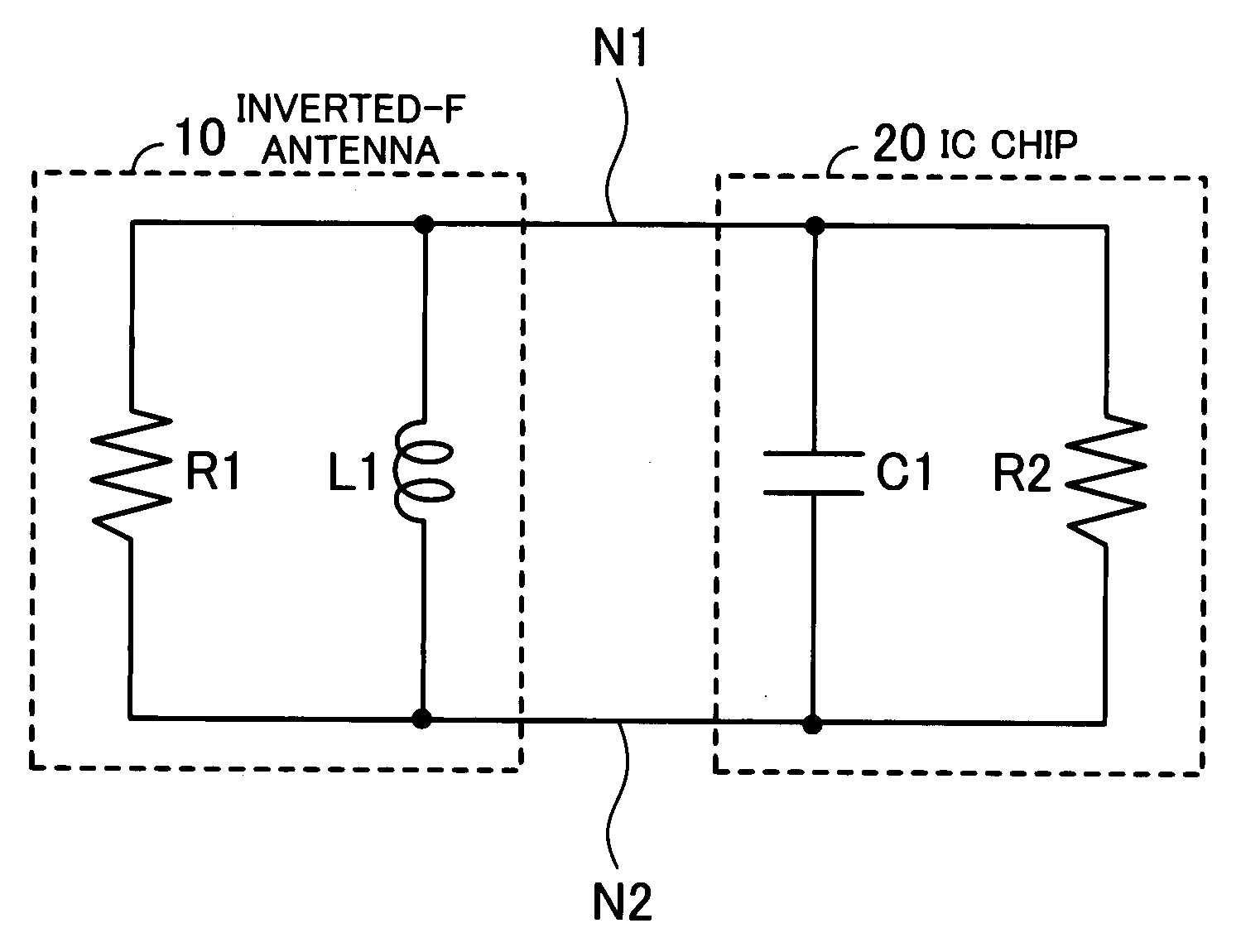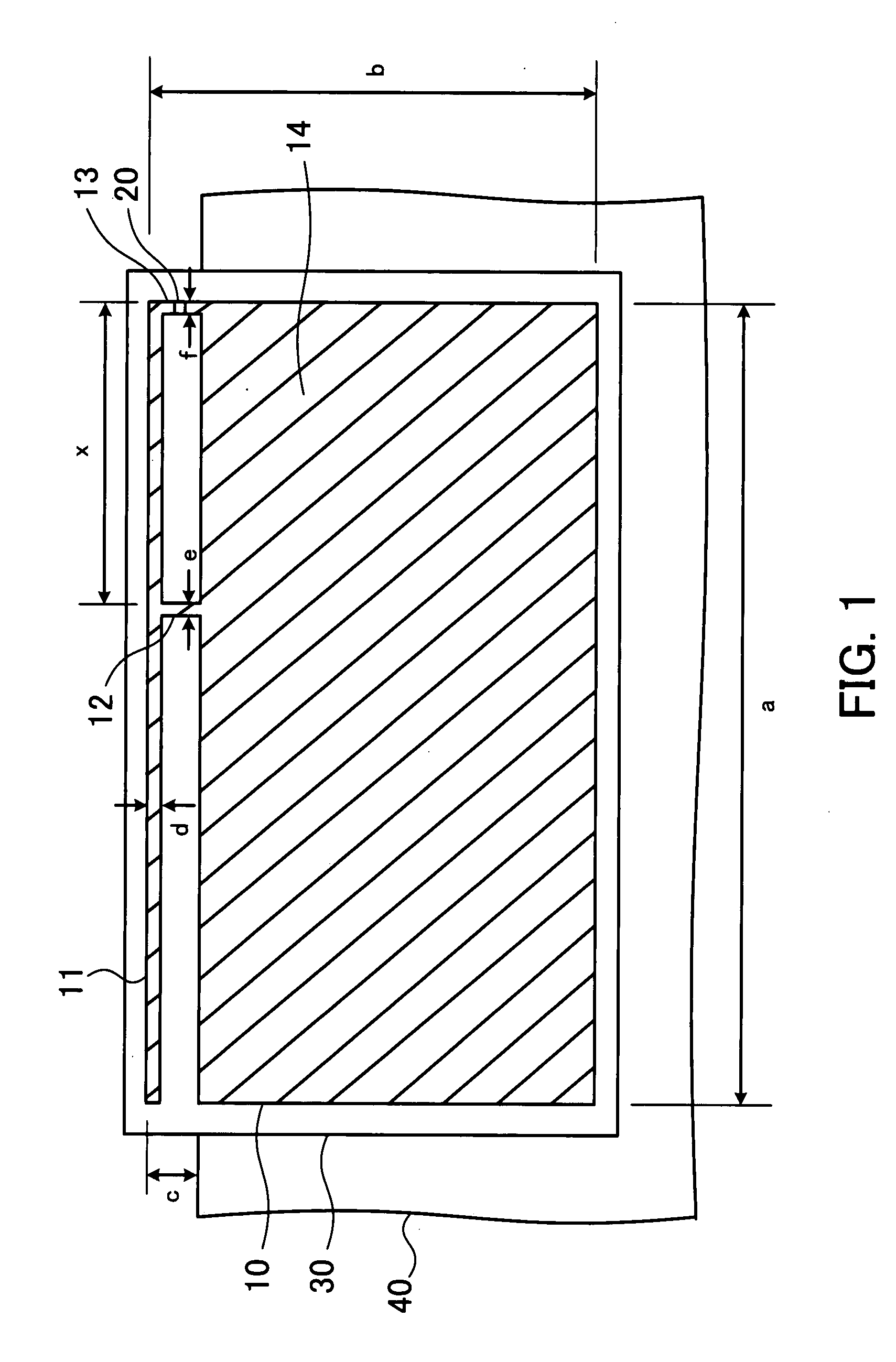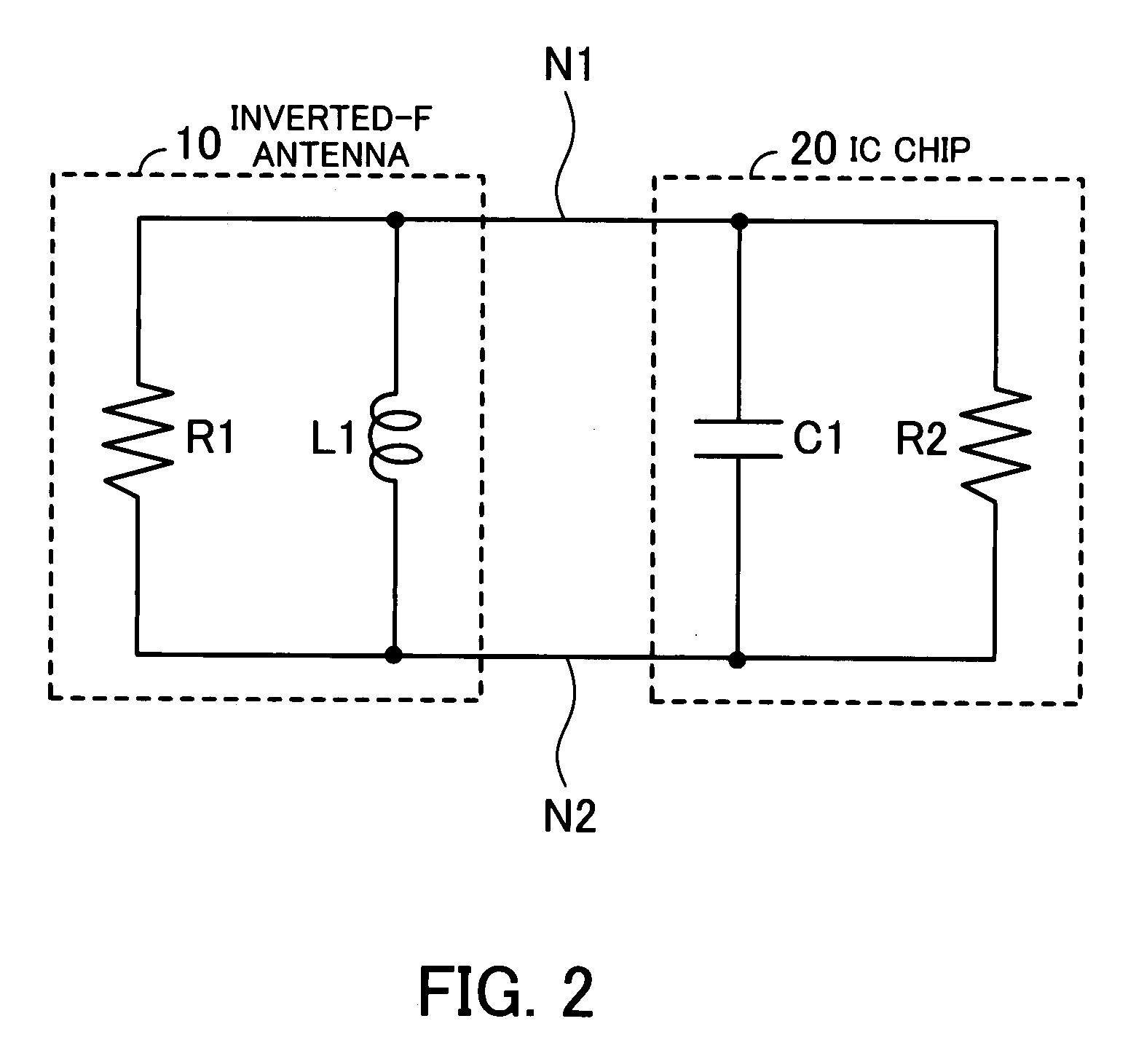Radio frequency identification tag
- Summary
- Abstract
- Description
- Claims
- Application Information
AI Technical Summary
Benefits of technology
Problems solved by technology
Method used
Image
Examples
first embodiment
[0031]Hereinafter, the of the present invention will be described in detail with reference to the accompanying drawings.
[0032]FIG. 1 is a plan view of an RFID tag according to the first embodiment. As shown in this figure, the RFID tag comprises an inverted-F antenna 10, an IC chip 20, and a film 30. The inverted-F antenna 10 is made of metal foil and is flatly formed on the front surface of the film 30. It should be noted that FIG. 1 shows the RFID tag attached to a metal housing 40 of an electronic device, for example.
[0033]The inverted-F antenna 10 comprises a radiating element 11, a short pin (matching circuit) 12, a power supply portion 13, and a ground bottom board 14. The radiating element 11 has the same length as one side of the ground bottom board 14 and is formed in parallel to the board 14, and one end thereof is connected to the power supply portion 13 and the other end thereof is open. Between both ends of the radiating element 11, the short pin 12 is provided and is ...
second embodiment
[0082]FIG. 17 is a plan view of an RFID tag according to the The RFID tag comprises an inverted-F antenna 90, an IC chip 100, and a film 110, as shown in this figure. The inverted-F antenna 90 is made of, for example, metal foil, and is attached to the film 110. It should be noted that FIG. 17 shows a case where this RFID tag is attached to a metal housing 120 of an electronic device, for example.
[0083]The inverted-F antenna 90 comprises a radiating element 91, a power supply portion 92, a short pin 93, and a ground bottom board 94. The radiating element 19 has the same length as one side of the ground bottom board 94, and is formed in parallel to the board 94, and one end thereof is connected to the short pin 93 and the other end thereof is open. In addition, the power supply portion 92 is provided between both ends of the radiating element 91. The IC chip 100 is attached between the power supply portion 92 and the ground bottom board 94. The IC chip 100 performs radio communicati...
PUM
 Login to View More
Login to View More Abstract
Description
Claims
Application Information
 Login to View More
Login to View More - R&D Engineer
- R&D Manager
- IP Professional
- Industry Leading Data Capabilities
- Powerful AI technology
- Patent DNA Extraction
Browse by: Latest US Patents, China's latest patents, Technical Efficacy Thesaurus, Application Domain, Technology Topic, Popular Technical Reports.
© 2024 PatSnap. All rights reserved.Legal|Privacy policy|Modern Slavery Act Transparency Statement|Sitemap|About US| Contact US: help@patsnap.com










